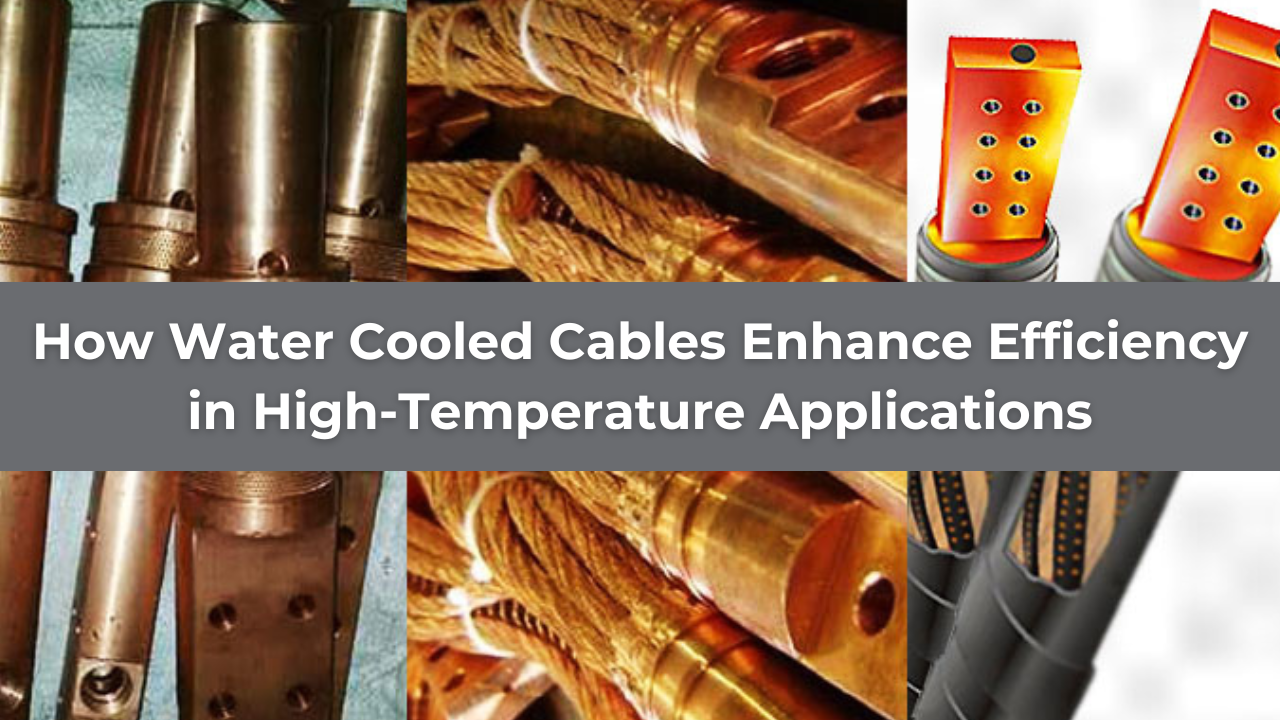In industrial settings where extreme heat is common, keeping equipment cool and working well can be a big challenge. Water cooled cables are a new answer that’s causing a revolution in high-temperature uses.
Let’s explore how these cables work and why more people are using them.
The Heat Problem in Industry
Think about a steel mill or a glass factory. The heat in these places can rise to levels that would damage normal electrical cables. This heat isn’t just unsafe; it also cuts down how well equipment works and how long it lasts.
Water Cooled Cables: A New Solution
This is where water cooled cables come into the picture. These cables are not your run-of-the-mill wires – they’re engineering wonders made to work in the hottest conditions. Water cooled cable manufacturers in India and worldwide have been creating these special cables to meet the growing need for heat-resistant solutions.
How Do They Work?
Think of a cable with its own cooling system built right in. That’s what a water cooled cable is. Here’s a simple breakdown:
- The cable core carries the electric current.
- A water circulation system surrounds this core.
- Cool water moves through this system always soaking up heat.
- The system then cycles out the hot water and brings in fresh cool water.
It’s like giving your cables their own personal cooling system!
Benefits of Water Cooled Cables
- Higher Current Capacity: Keeping cables cool allows them to handle more current without overheating. This results in more power through the same cable size.
- Longer Lifespan: Heat damages electrical parts. Water cooling cuts down thermal stress helping cables to last longer.
- Better Safety: Cooler cables lower the risk of fires or other heat-related issues.
- Less Space Needed: Water cooled cables can often be smaller than air-cooled options while carrying the same current.
Uses Across Industries
- Water cooled cables are finding uses in many high-heat industries:
- Steel Mills: These cables are used in electric arc furnaces and induction heating.
- Glass Manufacturing: They play a key role to power high-temperature melting processes.
- Power Generation: They cool generator output cables in power plants.
- Automotive: You’ll find them in electric vehicle fast-charging stations.
The Indian Connection
India’s industrial sector is growing fast making it a prime spot for water cooled cable technology. Water cooled cable manufacturers in India like L.D. Bhattar & Co. are leading the way in new ideas. We’re creating answers to the unique issues faced by the country’s industrial scene.
From the blistering heat of Gujarat’s manufacturing centers to the busy factories of Tamil Nadu, these cables are showing their value. They’re not just foreign tech – Indian engineers and firms are actively contributing to advancements in the field.
Looking Ahead
As industries strive to boost productivity and go green, the need for water cooled cables will increase. We’ll see more breakthroughs such as:
- Clever cooling systems that change water flow based on real-time temperature info.
- Linking with industrial IoT to predict maintenance needs.
- Creating even tougher heat-resistant materials.
Water cooled cable manufacturers in India and worldwide are set to shape this future in a big way.
To Wrap Up
Water cooled cables might not be the flashiest tech out there, but they’re causing a revolution in how we handle power in hot spots. By keeping things cool when the heat is on, these cables are letting industries push the envelope, boost productivity, and work more.
As we keep tackling the hurdles of a world that’s getting more electrified and powered-up, water cooled cables will no doubt have a key part to play in keeping things running smoothly – and coolly. In case you’re looking for reputable water cooled cable manufacturers in India, you can get in touch with us!

